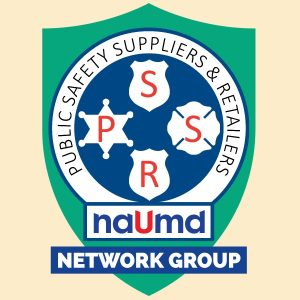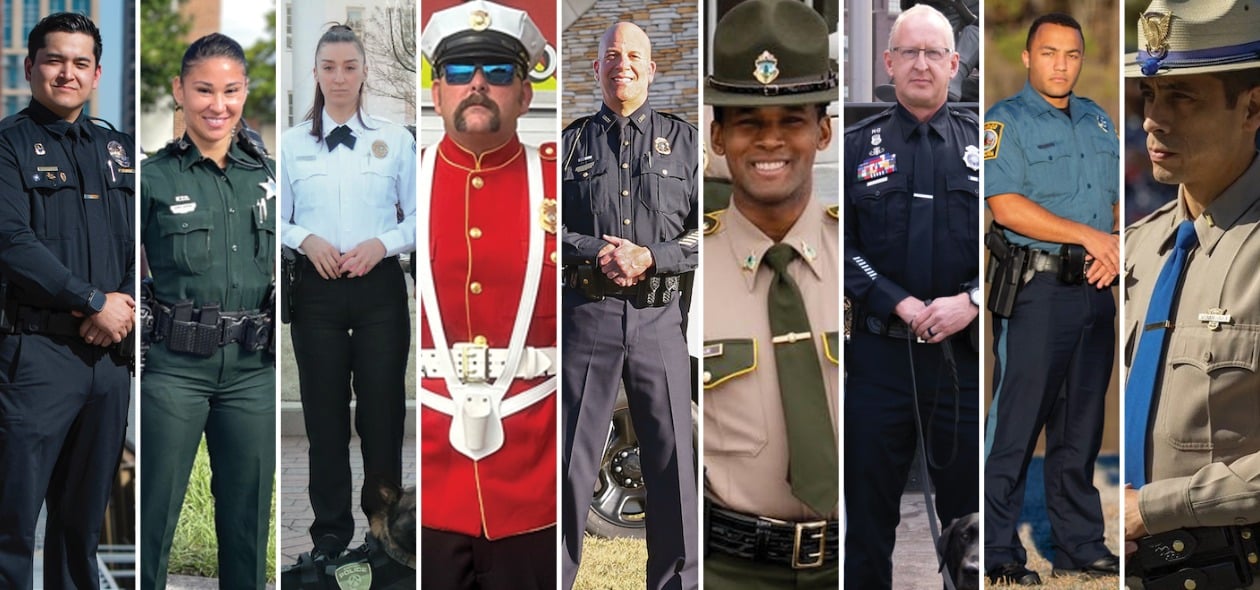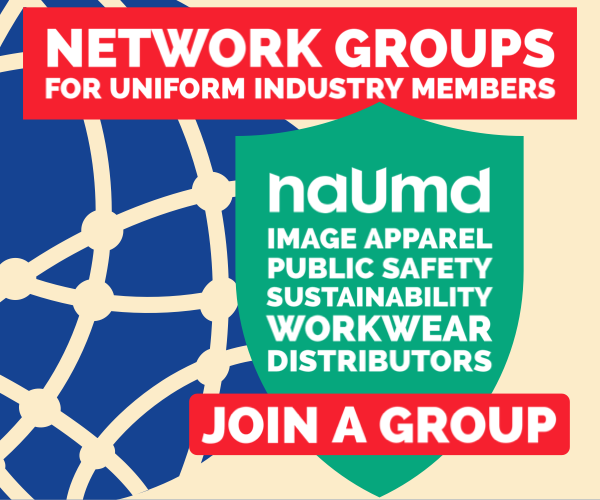Since it is National Uniform Day this week, I wanted to look at various ways public safety personnel show pride in their uniforms. Pride is a tricky thing to measure—you can’t put it on a scale or weigh it out like rolls of fabric. But you can see it in the way a police officer checks the shine on their badge before stepping out the door. You can see it when firefighters lace their boots for the thousandth time, not because they’re told to, but because habit and pride have fused into one motion. You can see it when EMTs wear their department’s patch over their heart and know the public recognizes that patch as a symbol of help arriving fast.
Uniform pride is more than a matter of personal dignity. It shows up in surveys and research about job meaning and commitment, and it plays out in events across the country where Class A dress coats, service caps, ceremonial gloves, and even branded T-shirts become part of the ritual of pride. For those of us in the business of manufacturing and distributing uniforms, these moments aren’t just cultural markers—they’re demand drivers. Pride, when expressed, often requires a particular garment, accessory, or patch, and that’s where our industry comes in.
Research That Wears Its Results on Its Sleeve
It may sound abstract, but studies have a way of making the invisible visible. Take law enforcement, for instance. The Pew Research Center’s Behind the Badge survey found that the majority of U.S. officers feel pride in their work “often” or “almost always.” That’s not just sentiment—it’s an acknowledgment that wearing the uniform is part of what gives the job its meaning. Younger officers, the survey showed, sometimes feel it even more strongly, suggesting that the uniform continues to be a beacon of identity despite the turbulence of modern policing.
Firefighters echo that sense of meaning in their own way. In PayScale’s broad database of occupations ranked by “most meaningful work,” firefighting consistently soars near the top. When workers are asked whether their job makes the world a better place, firefighters answer with a near-unanimous yes. It’s no surprise, then, that the fire service holds so tightly to its traditions of dress uniforms, honor guards, and parade appearances. Those garments don’t just signify rank—they symbolize purpose.
EMS personnel are not left out of this picture. The annual EMS Trend Survey, conducted by Fitch & Associates with EMS1 and NEMSMA, shows that pride persists even when challenges mount. Respondents note workload and compensation pressures, but they also mark high levels of commitment to the mission and a willingness to recommend the work to others. For a workforce that so often meets the public in their worst moments, the uniform is part of the steady image of reliability. In this sense, uniform pride is both internal satisfaction and external branding—it tells the world “we’re here for you.”
Surveys and reports may seem far away from the showroom floor or the cutting table, but they connect directly to what we sell. Pride is sticky—it binds people to traditions and rituals. And traditions and rituals are dressed in specific apparel. When officers stand in formation at a memorial or when a firefighter pins on their Class A jacket, they’re demonstrating pride that has been captured in survey percentages and translated into fabric and thread.
Rituals of Pride Across the Nation
If research is the theory, events are the practice. Across the United States, public safety professionals gather for ceremonies, charity events, and community outreach programs where uniforms are central to the experience.
Each May in Washington, D.C., tens of thousands gather for National Police Week. At the Candlelight Vigil, the names of fallen officers are read and honored. The sea of Class A uniforms and polished honor guards creates a tableau of respect and solemnity, a reminder that pride in the uniform carries with it the weight of sacrifice. These events require not only dress uniforms but also the precision tailoring and care that ensures they hold up under inspection by peers, families, and national media.
Firefighters have their own annual observance at the National Fallen Firefighters Memorial Weekend in Emmitsburg, Maryland. Departments from across the country send delegations to honor those lost in the line of duty. The uniformity is not accidental—Class A dress, complete with caps, insignia, and gleaming shoes, is part of the ritual. Pride here is not loud; it is steady, formal, and meticulously maintained.
EMS personnel are similarly recognized during the National EMS Weekend of Honor in Arlington, Virginia, where fallen providers are remembered. The sight of dress uniforms, honor details, and the careful placement of badges underscores that pride in the uniform is a shared expression across all branches of public safety.
Pride, however, is not confined to memorials. It leaps into action at events like the Law Enforcement Torch Run for Special Olympics, which carries the Flame of Hope across states, often with officers jogging in department-branded shirts or outerwear. It’s there in National Night Out, a coast-to-coast neighborhood gathering where officers interact with residents while wearing their uniforms as a symbol of approachability and trust. It’s in Coffee with a Cop, where something as simple as a patch on a sleeve turns a cup of coffee into a community-building exercise.
Firefighters, meanwhile, climb for pride as well as remembrance. The 9/11 Memorial Stair Climbs recreate the 110-story challenge of the World Trade Center towers, often undertaken in turnout gear or memorial T-shirts. The IAFF Fill the Boot campaign has been a summertime tradition for seventy years, with firefighters in gear standing on street corners to raise money for the Muscular Dystrophy Association. Pride in uniform in these moments is highly visible, sometimes even playful, but always tied to the public image of service.
Then there are the competitions and charity events that bring police and firefighters together in spirited rivalry. Battle of the Badges blood drives pit departments against each other with bragging rights and challenge coins at stake. The U.S. Police & Fire Championships in San Diego give sworn athletes their own Olympic-style games. And in places like New York, the legendary FDNY vs. NYPD hockey games pack arenas with fans who are as loyal to the uniforms as they are to the teams. Pride here is sweaty, competitive, and unashamedly celebratory.
Finally, this week brings National Uniform Day, launched by NAUMD itself, which has grown into a national platform for recognizing the value of uniforms and the people who wear them. Associations, companies, and agencies are seizing the opportunity to post tributes, run promotions, and celebrate the link between pride and apparel. What began as a date on the calendar has become a new tradition—one that puts pride in the uniform front and center for an entire day.
Pride Made Visible in Fabric and Thread
What ties all these events and survey results together is the way pride translates into visible requirements. Agencies that honor the fallen, run for causes, or gather in public expect their personnel to look impeccable. That expectation lands directly on the shoulders of uniform makers and distributors.
Ceremonial kits have to travel well, which means dress coats that keep their shape even after being packed and unpacked, service caps that hold their lines, and gloves that don’t yellow or sag with repeated use. Event apparel has to meet deadlines and match existing branding—branded polos in department colors, patches that echo insignia, and T-shirts that can be worn proudly in public.
Cause patches are an entire economy of pride unto themselves. Departments swap out standard insignia for versions honoring breast cancer awareness, autism awareness, or veterans. That means Velcro-backed patches, limited runs, and careful coordination with calendars. Every October, every April, every November, pride takes on a new form and requires new apparel.
Even smaller units, like honor guards, present opportunities. Their numbers may be few, but their demands are exacting. Fit must be precise, tailoring impeccable, and details flawless. For manufacturers, that’s an invitation to provide premium service and create loyalty that lasts far longer than a single order.
And let’s not forget the care side of the equation. Uniforms built for pride need to last, but they also need instructions. Providing laundering guidelines, storage advice, and even small accessories for maintenance helps departments keep their pride looking sharp. That after-sale education is not just customer service; it’s an extension of the pride loop itself.
Pride as the Thread That Holds It Together
In the end, pride is both intangible and concrete. It lives in survey numbers that show officers, firefighters, and EMTs feel meaning in their work. It lives in massive memorial events that require perfectly pressed dress uniforms. It lives in charity campaigns where turnout gear becomes a symbol of community generosity. It lives in playful rivalries and solemn vigils alike.
For the uniform industry, pride is not just an abstract emotion—it is a roadmap. It tells us when to expect demand spikes for dress uniforms, when to prepare for cause-patch programs, and when to supply quick-turn branded apparel for charity events. It tells us that our products are not just garments but participants in rituals of meaning.
And in a week when the nation pauses for National Uniform Day, that truth becomes even clearer. Pride in the uniform is pride in the profession, and pride in the profession is what keeps our industry vital. Every stitch, every patch, every crease is a small part of a much larger story—one that public safety professionals live every day, and one that we, as suppliers and distributors, help them tell.




















